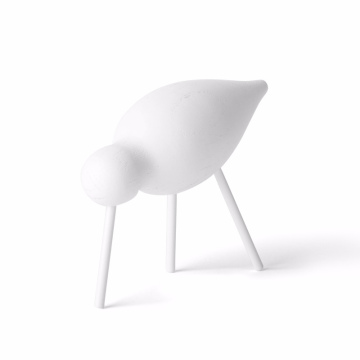A Taste of Tradition: Indulging in Japan’s Best Donburi
What is Donburi? An Overview of Japan’s Beloved Rice Bowls
Donburi, a quintessential dish in Japanese cuisine, refers to a rice bowl topped with various ingredients. Its name originates from the Japanese word "donburi," which translates to "bowl" in English, reflecting the simplicity and functionality of this beloved meal. Historically, donburi has been a staple in Japanese homes and restaurants, showcasing the country's culinary heritage while adapting to contemporary dining trends.
The origins of donburi can be traced back to the Edo period (1603-1868), a time when commoners began using bowls to serve rice and toppings, making the meal more convenient. As Japan’s society evolved, so too did donburi, with chefs experimenting and introducing a plethora of flavors and textures. This adaptability is one of the reasons donburi remains popular today, bridging traditional Japanese cooking techniques with modern flavors.
Culturally, donburi holds a significant place in Japanese cuisine, embodying comfort food that appeals to people of all ages. It reflects Japan’s relationship with rice, which is considered a staple food, symbolizing prosperity and health. As a result, various types of donburi have emerged, including gyudon (beef bowl), katsudon (pork cutlet bowl), and unadon (grilled eel bowl), each offering a unique taste and culinary experience. This variety allows donburi to cater to different tastes and preferences, making it a versatile dish enjoyed in casual and formal settings alike.
In recent years, donburi has continued to evolve, with fusion variations incorporating international flavors and ingredients, demonstrating its adaptability to global culinary influences. Whether enjoyed at a local izakaya, a family home, or a high-end restaurant, donburi remains a delicious and accessible way to culinary experience the rich tapestry of Japanese cuisine, illustrating the harmony between tradition and modernity.
Exploring the Different Varieties of Donburi
Donburi, a traditional Japanese rice bowl dish, is a beloved staple that showcases a variety of flavors and ingredients. Each type of donburi brings its unique character, often reflecting regional specialties or seasonal ingredients. One of the most popular varieties is Gyudon, or beef bowl, which features thinly sliced beef simmered in a sweet-salty sauce made of soy sauce, mirin, and sake. Typically served over a bed of steamed rice, Gyudon is garnished with onions and sometimes a raw egg, adding a rich flavor and creamy texture. Its simplicity and heartiness make it a favorite among many.
Another notable type is Katsudon, which combines deep-fried pork cutlet with a splendid medley of flavors. The pork, known as tonkatsu, is breaded and fried until golden brown, then simmered with onions and eggs in a savory sauce before being served over rice. This dish offers a delightful contrast of textures—from the crunchy pork cutlet to the soft, steamed rice—making it a satisfying meal that is both fulfilling and comforting. Katsudon often evokes a sense of nostalgia, particularly among those who grew up enjoying this dish at home.
Further enriching the landscape of donburi is Unadon, or grilled eel bowl, which features eel marinated in a flavorful sweet soy sauce and grilled to perfection. Unadon is typically served over rice and garnished with a sprinkle of sansho pepper for an added kick. This delicacy not only highlights the rich umami flavor of the eel but also reflects the cultural significance of eel in Japanese cuisine, particularly during the summer months. The diverse varieties of donburi reveal the artistry and depth of Japanese cooking, enticing food lovers with their vibrant flavors and comforting nature.
Where to Find the Best Donburi in Japan
When it comes to savoring the rich and diverse flavors of donburi, Japan boasts a plethora of dining options ranging from street food stalls to upscale restaurants. Each region has its unique take on this beloved dish, offering various interpretations that reflect local culinary traditions. In major cities like Tokyo, Osaka, and Kyoto, food lovers can discover both popular dining establishments as well as hidden gems that serve exceptional donburi.
In Tokyo, visitors should not miss out on the historic district of Tsukiji, where seafood donburi shines. Renowned restaurants such as Sushizanmai provide access to fresh ingredients sourced from the nearby fish market, resulting in vibrant chirashi donburi that delights the palate. Additionally, the Ueno area offers affordable donburi at street vendors, where generous portions of gyudon (beef donburi) can be enjoyed in a casual setting.
Osaka, famous for its rich food culture, is home to numerous izakayas and casual eateries that serve hearty renditions of donburi. The Kushi-Katsu Daruma chain is a must-visit, known for its fried skewers served over rice, which embody the locals' love for bold flavors. Moreover, Seek out hidden gems in the early morning markets to culinary experience fresh donburi breakfasts featuring local ingredients, enhancing the authentic culinary experience.
Meanwhile, Kyoto stands out for its emphasis on traditional preparation methods and locally sourced produce. Restaurants like Omen offer exquisite udon donburi, prepared with seasonal vegetables and flavorful broths. When dining in this city, it is crucial to pay attention to the freshness of ingredients and the artistry behind presentation, as both play a vital role in the overall experience of enjoying donburi.
Ultimately, when searching for the best donburi in Japan, whether at a bustling market or an elegant restaurant, consider the significance of local ingredients and authenticity in preparation. This will not only enhance the flavor but also provide a deeper understanding of Japanese culinary traditions.
Tips for Making Donburi at Home
Creating authentic donburi at home can be a rewarding culinary experience, allowing you to indulge in traditional Japanese flavors. To successfully recreate this beloved dish, it is essential to focus on quality ingredients. Start by selecting premium rice, as it serves as the foundation of donburi. Japanese short-grain rice is preferred for its stickiness and texture, which helps to carry the toppings beautifully. Ensure you wash the rice thoroughly before cooking, as this step removes excess starch and results in a fluffier consistency.
When it comes to choice of toppings, the options are virtually limitless, ranging from proteins such as chicken, beef, or tofu to a variety of vegetables. One popular recipe is Katsu Don, featuring a breaded pork cutlet atop rice, dressed with a savory sauce. Another beloved option is Gyudon, which includes tender slices of beef simmered in a delicate broth. Don’t hesitate to experiment with various ingredients; let your palate guide your selections for a personalized touch!
A traditional donburi is best enjoyed when served piping hot, making proper cooking techniques paramount. Sautéing your toppings in a skillet and preparing a flavorful broth can elevate the overall taste. Furthermore, employing the use of a donabe or a heavy-bottomed pot can enhance even heat distribution during cooking, making for consistent, delicious results.
Garnishing is another essential aspect of serving donburi. Consider adding sliced green onions, a sprinkle of shichimi togarashi, or a drizzle of sesame oil to amplify the flavor profile. Finally, serving your donburi in a traditional bowl can add an authentic touch to your dining culinary experience. With these tips, you’ll be well on your way to enjoying delightful homemade donburi and savoring a taste of Japan in your kitchen.






